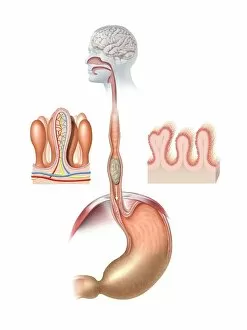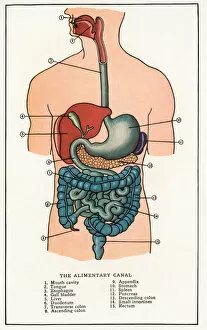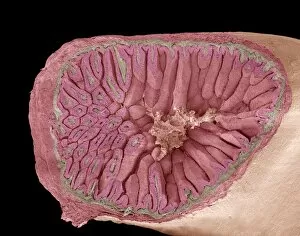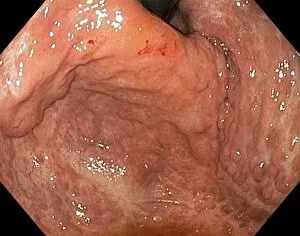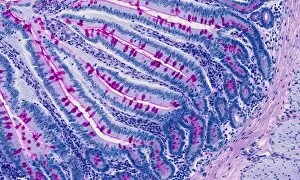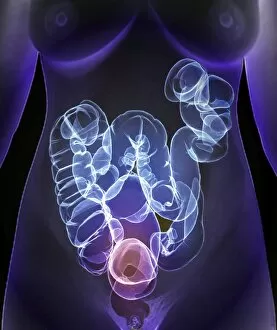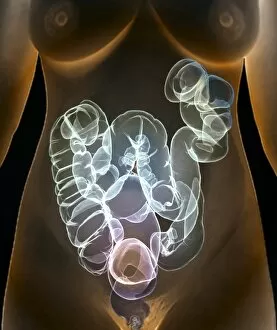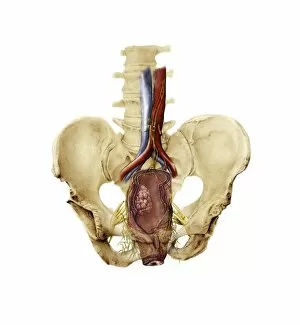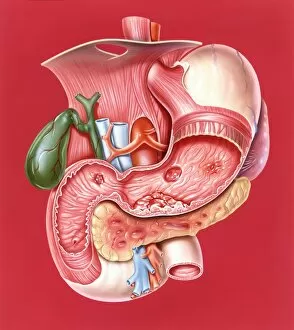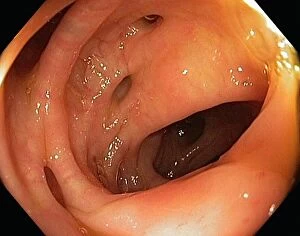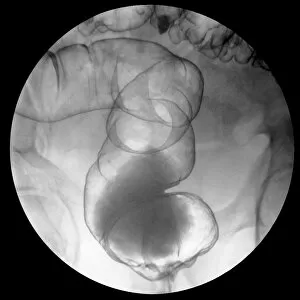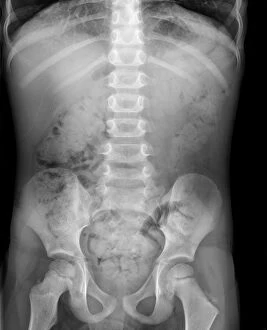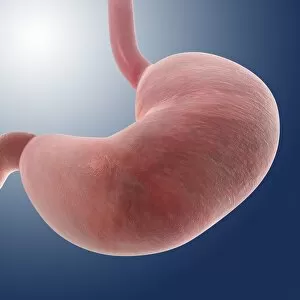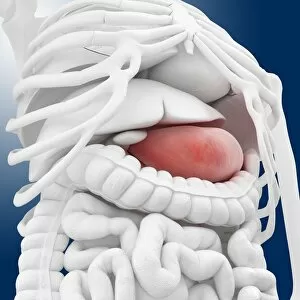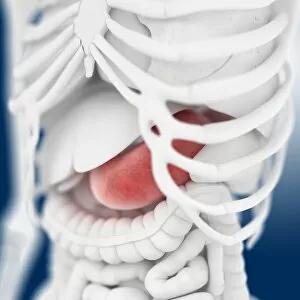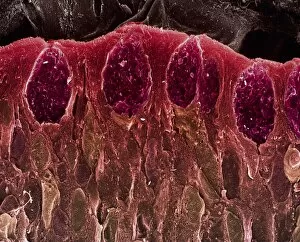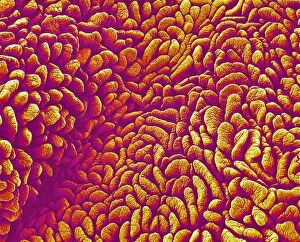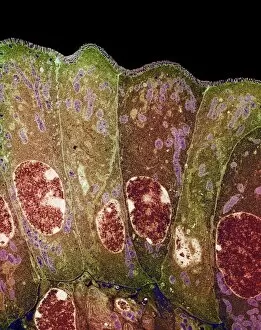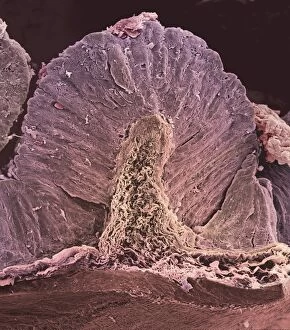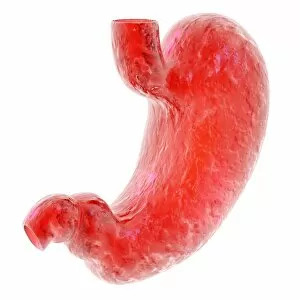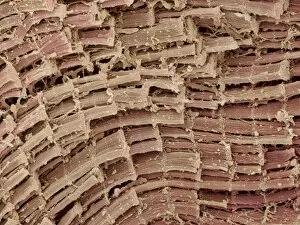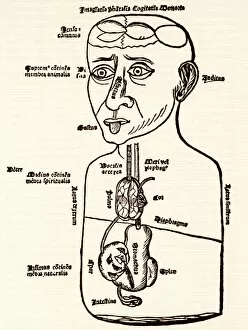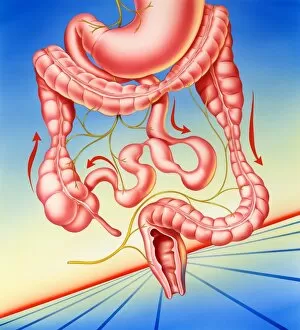Alimentary Canal Collection
"Journey Through the Alimentary Canal
For sale as Licensed Images
Choose your image, Select your licence and Download the media
"Journey Through the Alimentary Canal: Exploring the Marvels of Our Digestive System" Step into the fascinating world of the human digestive system as we embark on a visual exploration. From vintage anatomical prints to intricate artwork, witness the beauty and complexity of our alimentary canal. Intriguingly detailed, an artistic representation from 1912 showcases the entirety of this remarkable system. The diagram vividly illustrates how it passes right through our bodies, highlighting its crucial role in nourishing us. Zooming in further, electron microscopy reveals intestinal microvilli with astonishing clarity. These tiny structures increase surface area for nutrient absorption, emphasizing nature's ingenious design. Moving forward in time, a captivating light micrograph captures the intricacies of the small intestine. Its vibrant colors and delicate textures remind us of its vital function in digestion and nutrient extraction. However, not all is smooth sailing within this wondrous canal. Medical images shed light on conditions such as ulcerative pancolitis and colon cancer locations depicted through thought-provoking artwork. These reminders serve as a call to action for maintaining good health and seeking early detection. But fear not. A healthy large intestine emerges from a 3D CT scan like an architectural marvel—a testament to resilience and well-being. Such scans provide invaluable insights into our internal workings while inspiring awe at their precision. Finally, we encounter total mesorectal excision—an artful representation that highlights surgical interventions aimed at treating specific ailments within this complex network. It serves as a reminder that medical advancements continue to evolve alongside our understanding of this incredible system. The alimentary canal—more than just a pathway for food—is an intricate masterpiece crafted by evolution itself. With each image encountered along this journey, we gain deeper appreciation for its wonders and are reminded to nurture it with care.

